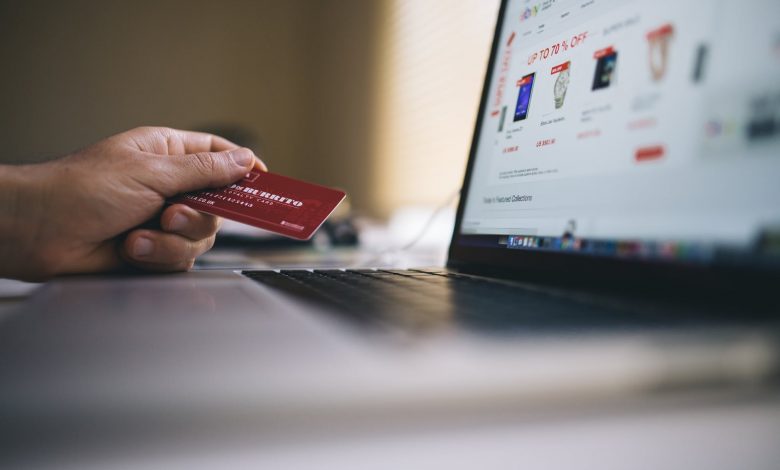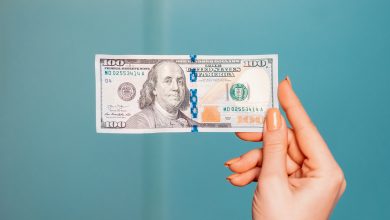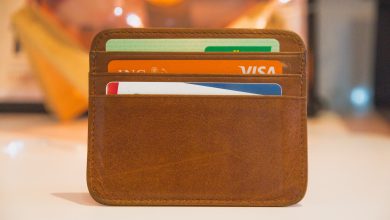Creating a Budget Using a Credit Card

In most cases, you aren’t going to hear the terms budget and credit card used at the same time. Often, people try to work out their budget to pay down their credit cards. Still, we think that budgeting and credit cards can go hand-in-hand if you use them correctly. It’s possible to stay on budget while using credit cards, but you have to make them work for you rather than against you.
If you happen to have no interest credit cards, then you are going to find it much easier to handle all of your budgeting needs. Still, you can make this process work with a traditional card.
Why You Should Use Credit Cards
Most people think that buying on credit is an evil they could do without. Yes, it is possible to get into serious debt and trouble with a credit card, but not if you know how to use them correctly. We are going to talk about that later, but you need to understand how beneficial credit cards are first.
Expense Tracking and Cash Flow
At their basic level, credit cards offer two valuable options for budgeting:
- Track all expenses you make
- Manage cash flow (gives you 30 interest-free days to pay)
That cash flow advantage ensures that you can smooth out your spending needs and income through the month. Therefore, you don’t have a huge expense on the 10th of the month when you don’t get a paycheck until the 15th. Of course, you should make sure that your check is going to cover the expenses you put on the card. No interest credit cards are helpful because, if you can’t pay off the full amount, you don’t have more added to the bill in the form of interest on the amount you paid.
The ability to track your expenses can help you determine where most of your money goes each month. Many credit cards have online portals with helpful tools that can help you chart and categorize your expenses.
Perks and Rewards
Most people who use credit cards for all or most of their spending do so to help them optimize the rewards they earn. If you regularly spend money from your credit cards (and are going to make those purchases and payments anyway), you can easily rack up cash back, airline miles, or loyalty points.
Plus, reward cards often offer several other perks, such as fraud protection. These things are usually included for free. Therefore, if someone steals your card or account number or you’re overcharged for something, the credit card company covers the expenses and can investigate on your behalf.
Whenever you’re booking a rental car or hotel room, it’s a good idea to use a card. Many times, high-end cards have free travel insurance included, which might cover trip interruptions and cancellations. You may even get free insurance coverage on a rental car, so if you got into an accident while using the rental, you don’t go through your personal car insurance company.
Of course, credit cards are safer and simpler. You don’t have to carry cash with you and have one card for any expenses that might pop up.

Tracking Your Expenses with Credit Cards
Before you can use your credit card in your budgeting strategy, you need a working budget in place. You can find a variety of popular options available. These include:
- Spreadsheets: You can easily create a budget in a spreadsheet, such as Excel. Consider two columns to fill out – one for expected and one for actual expenses. You can then look at the end of the month to see how much you thought you had to spend and what you actually spent. This can help you see problem areas and estimate expenses so that you’re not unprepared when a bill comes up.
- Zero-Sum Budget: With this budget, you use your last month’s income to find your current month’s needs. If you allocate every dollar earned on paper – for groceries, bills, investments, and savings – this type of budget forces you to pay yourself first and optimize your spending habits.
- Online Budget: You can find a variety of softwares available online to help you budget each month. They allow you to put in how much you earn and what expenditures you have to create a spend/save mixture for your situation.
Whatever option you choose, it could be beneficial to sign up for a service that can track your credit purchases and spending for free. This can help you optimize your investments.
Build Your Budget with a Credit Card in Just Five Steps
Once you’ve created your budget and strategy, use these five steps:
1. List Your Expenses
If this is your first budget, you need to know your monthly expenses. Make sure you list everything that you pay every month. This includes car payments, rent or mortgage, insurance, groceries, gasoline, utilities, and more. Start with the essentials and then go to the non-essentials to ensure that your budget works for you.
A credit card statement is quite helpful here and can do most of the work for you. Plus, you can see those little purchases you may have forgotten, such as your coffee runs and convenience store items.
2. Add and Compare
Once you’ve listed all of your expenses, you have to add them all up and compare it with your bring-home income. Are your expenditures more than what you bring home or less? You probably know the answer to that already.
If monthly spending exceeds your income, you may be deep in debt or on the road to debt. If you make a lot more than you spend, you should have plenty of money leftover. Those who don’t may have forgotten to add some things to their budget.
This is where it can be helpful to import credit cards into a tracking service because all that is done for you. Then, it’s possible to see where you’re overspending.
3. What Can Be Cut
Whether or not you have money left over each month, it can be a good idea to see if you can save anywhere. This is the point of making a budget.
With those free online services, you can categorize spending and see actual spending habits. For example, you may think that you’re only spending $500 a month for groceries, but you may be spending a lot more or less. These services can help you get a definitive answer.
Now, you can set up your budget for each of those categories to see how you’re doing using real-time. For example, you may only want to spend $100 on eating out, so you can set up that constraint in the system and know when you’re close to the limit.
Even if you don’t use free services online, you can still do this yourself. Go through your credit card and bank statements for the last few months. Tally up all the expenses in a relevant category (utilities, food, exercise, entertainment, restaurants, etc.) and see where you stand. You can then find out your problem areas and can work to make changes.
4. Create Realistic Categories
Since you now know the truth about your particular spending habits, you need to create a new budget limit that is realistic. Consider taking your average spending in unfixed categories and try to cut that amount by at least 20% for the next month. As an example, let’s say you spend $900 for groceries this month. Next month, cut it down to $720 (20 percent less). Continue cutting until you have a realistic amount for food with which you can live.
5. Start Fresh with Expectations and Your Credit Card
When the new budget is up and running, start your new month with new budget expectations. Instead of using debit cards or cash, put all of the purchases on one credit card (or a couple if necessary).
Once a week, log in to each credit card to see where you now stand with the budget. What have you spent on groceries or entertainment? Do you have enough left over?
The best thing to do is to pay off the credit card each month to avoid having to pay interest. Now, here is where no interest credit cards can be beneficial. Most credit cards give you a particular window where you can spend as much as you want (up to your limit) without accruing interest. Often, this is 12 to 18 months. Therefore, you can keep a balance without having to pay extra. Just remember that, once that preliminary period is over, any remaining balance is going to be subjected to interest rates.
Therefore, it is a good idea to get into the habit of paying the bill off each month. You may also want to consider asking for a credit line decrease. If you’ve budgeted $1,500 for all of your chargeable expenses, doing this can require you to stay within budget.
However, this could backfire because you may have an unexpected expense come up that you can’t pay with the card because it is maxed out. Also, lowering your credit limit means that you have a lower amount of usable credit showing on your credit report. Though you pay off the bill each month, it still looks like you have less credit to use, which could make you look unfavorable to lenders.

Should You Use a Credit Card?
The question becomes, should you use a credit card to help with budgeting. The answer is yes, but a few factors come into play. No interest credit cards are ideal because if you get into a bind and can’t pay off the full amount, you aren’t penalized with interest payments. Still, the goal is to keep spending habits in check, while having enough money to put in savings and pay your bills.
If you are incapable of using credit cards responsibly, then this option might not be right for you. Also, it could be best to wait if you have a lot of credit card debt now. You should still create a budget, but you should buy everything with cash and keep spending down so that you can pay off your cards, get out of debt, and start the credit-card budget when things have settled down financially.



